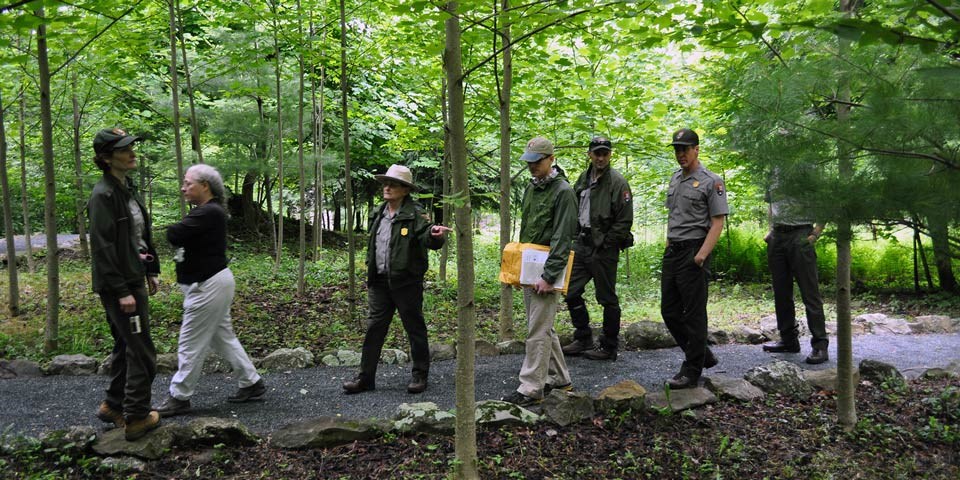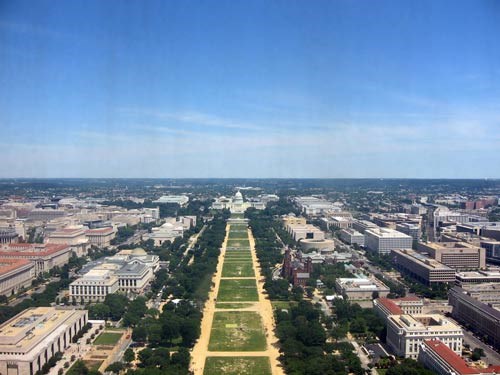Replanting of hemlocks would only be feasible with ongoing pesticide applications. Instead, the NPS is replacing missing eastern hemlock trees with tulip poplars (Liriodendron tulipifera) to reestablish tree cover, suppress undesirable pioneering understory species, and encourage regeneration of historically appropriate native forest floor shrub and herbaceous layer.9

NPS
While Shenandoah has already lost approximately 90 percent of its eastern hemlocks since wooly adelgid was first seen in the park in 1988, this new biological control also offers some hope that the tulip poplars may be ecologically succeeded by an eastern hemlock forest at Rapidan Camp once again.
In Washington, DC, the National Mall’s turf panels between Third and Fourteenth Streets are perhaps the most important landscape for civic engagement and First Amendment gatherings in the country. However, the turf panels were not designed for the heavy use to which they are subjected (which include approximately one hundred fifteen special events annually, in addition to regular foot traffic). In 2005, Congress mandated that the NPS prepare a comprehensive plan for the rehabilitation of the National Mall; the resulting plan was completed and approved in 2010.11 The goal for the Mall’s turf panel rehabilitation was to design and install a sustainable system that will function under heavy use. The second phase of the three-phase turf rehabilitation project is currently underway.12

NPS
During special events, modular decking is installed over the rehabilitated turf panels to reduce soil compaction and allow for air circulation. Since phase one, the NPS has hired a turf manager and developed an operations and maintenance manual to guide proper care for the rehabilitated turf. In addition, officials are reviewing the permitting structure for special use to consider sustainable cost recovery from events.
Considered together, the natural and cultural optimal levels of water, soil quality, and access to air allow for ideal growing conditions, while soil structure, managed patterns of use, and modular decking allow for the best surface for heavy active use. Lessons learned during the phase one project have informed refinements to the design of the phase two rehabilitation, including soil profile and composition.
Continue: Modularity
Back to Resilient Systems Main
9. John W. Hammond, Cultural Landscape Report for Rapidan Camp (Boston, Mass.: National Park Service, Olmsted Center for Landscape Preservation, 2014).
10. Jennifer Franklin, Rapidan Camp Cultural Landscape Technical Assistance (November 30, 2012).
11. See Secretarial Order 3326 (January 24, 2013).
12. Phase one rehabilitated the 11.3 acres of turf between Third and Seventh Streets and was completed in 2012, just before the second inauguration of President Barack Obama. Phase two includes the rehabilitation of turf panels between Seventh and Twelfth Streets; it began in October 2014.
Last updated: February 24, 2017
